April Book Review: The Hike
A delightful picture book about nature journaling by Alison Farrell
Welcome to Edition #7 of the Nature Art Book Club, featuring The Hike by Alison Farrell. April’s featured book is one for the kids, although I’m a 30-year-old woman and I enjoyed it immensely. I had the pleasure of chatting with the author for this review, so you’ll get to learn about the book through Alison’s own words in the Q&A section below. Enjoy!
The Hike follows three children and their dog, Bean, as they embark on a big hike to the summit of a mountain. In the beginning, they run with wild abandon along the trail. Soon, though, a patch of delicious thimbleberries catches their attention and they slow their pace. They begin to notice more of the plants and animals hidden around them and spend the rest of the day moseying along the trail with their nature journals out, documenting and asking each other questions about what they see.
Their day is full of discoveries as they identify animal tracks, write poems about what they see, and make baskets out of leaves. There are also a few misadventures, like getting lost and feeling sluggish after eating too many berries, but in the end they make it to the summit and back home just in time for bed, with twinkling views of constellations on their journey home. This book is recommended for kids ages 3-7 years, but I’m certain that parents will enjoy it just as much.
A video flip-through:
While researching nature journaling resources for some classes I was teaching, I came across this book. Although I was searching for adult resources, I got this one just for me! Since then, I’ve included it in the nature art book nook that’s part of my traveling Tiny Worlds of the Appalachian Mountains exhibit (opening in Asheville at the North Carolina Arboretum in May!).
This is the first picture book I’ve found that embodies the pure joy of making discoveries outside (especially with friends!) and translating them into art.
The illustration style perfectly echoes the energy of the storyline. On the surface, the art is childlike and carefree. Pencil marks are loose and imperfect, giving the impression of a sketchbook page. Upon closer inspection, though, you can see all the tiny details and tidbits that come together to give it complexity. It’s clear that the author had fun building out scenes with doodles of the snacks the kids are eating, teeny mushrooms and flowers dotting the landscapes, and even the clothes drying on the line back home. This book feels like an entire world that I’d like to live in.
I’m glad the author included some of the less magical aspects of taking a hike, too, like getting worn out on the steeper sections of trail and becoming lost because you misread the map. This shows young readers that even though hikes aren’t always fun in every single moment, they’re always worth it!
Another aspect of the book that appeals to me is the inclusion of dozens and dozens of Pacific Northwest flora and fauna that are tucked away into each scene. These discoveries so perfectly parallel the “treasure hunt” experience that I have when I’m outside.
Rosalie Haizlett: Hi, Alison! First of all, thanks for putting such a joy-filled book into the world. I’m curious— what does your own connection to nature look like?
Alison Farrell: I am a person who enjoys copious amounts of movement and outdoor activity. In my early 20's, this impulse helped draw me to farming. For 6 years, I worked on Community Supported Agriculture style farms in upstate New York, first through AmeriCorps. Later I stayed because I appreciated the connection to nature, and enjoyed the physical labor.
Rosalie: What did working on the farm teach you about the natural world?
Alison: Before farming, I likely would have glazed over wild plants on the side of the road--labeling them either as a patch of weeds or a nice looking patch of green. Farming helped me to have more of a relationship with plant species as individual, knowable beings that exist in communities. I came to love how each species offers its own delightful gifts, such as scents, dyes, or unique healing/nourishing properties. Learning about plants was incredibly exciting and enlightening, connecting me to the natural world in a deeper way.
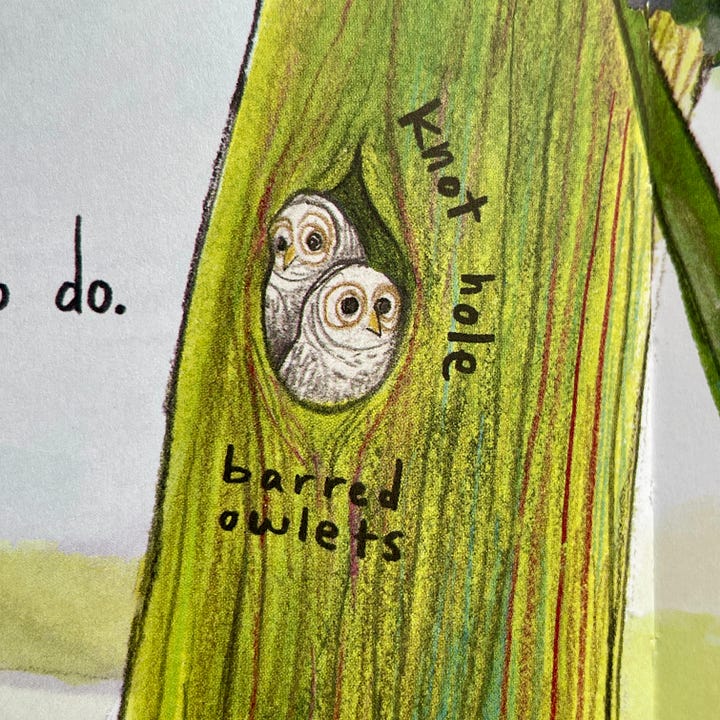
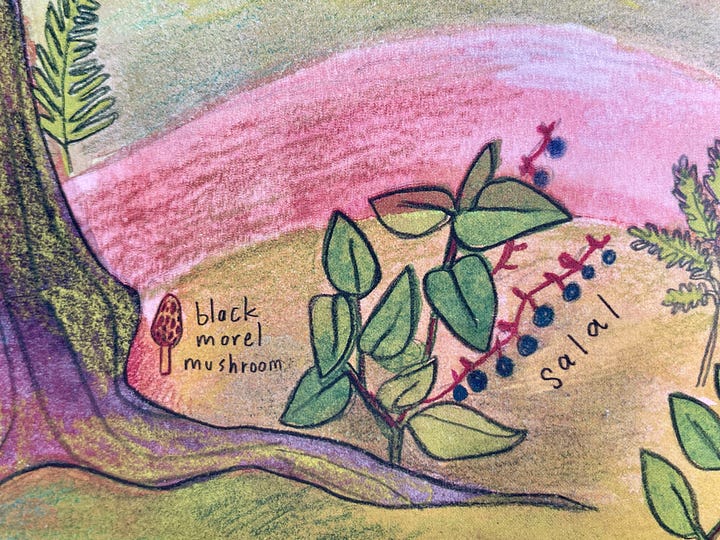
Rosalie: I really enjoy the "easter egg" moments, where you've tucked interesting plants and animals into the background of each scene and provided their common names. I know you live in Oregon—are all the species you selected found in your home region?
Alison: I didn't intentionally set out to write a book about my experiences with plants. “The Hike” first came as a simple adventure story. However, as I continued to work on the spreads, I chose to include local plants as a way to ground the adventure and create a fictional, but site-specific location.
One example of this in “The Hike” are the thimbleberry scenes. Thimbleberries are these jammy, delectable berries found in the Pacific Northwest, where I live. For me, one of the joys in life is stumbling upon a perfectly ripe wild berry patch, only in season for a few short weeks. They are a delicacy that cannot be bought or sold. You really can only find and consume them in nature, in a brief timeframe.
Rosalie: What message do you hope young readers take away from your book?
Alison: Kids on the farm loved interacting with plants. They puckered their lips to the lemon-like qualities of oxalis, purslane, and sorrel. Preschoolers adored gently running their hands over trays of soft cruciferous seedlings, or having their cheeks painted with a sliced beet.
Ultimately, I believe that one point of view that “The Hike” offers is for the reader to see nature as a magical place, brimming with delights, if you decide to get out there and interact with them.

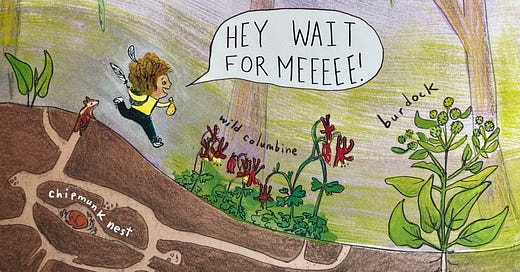



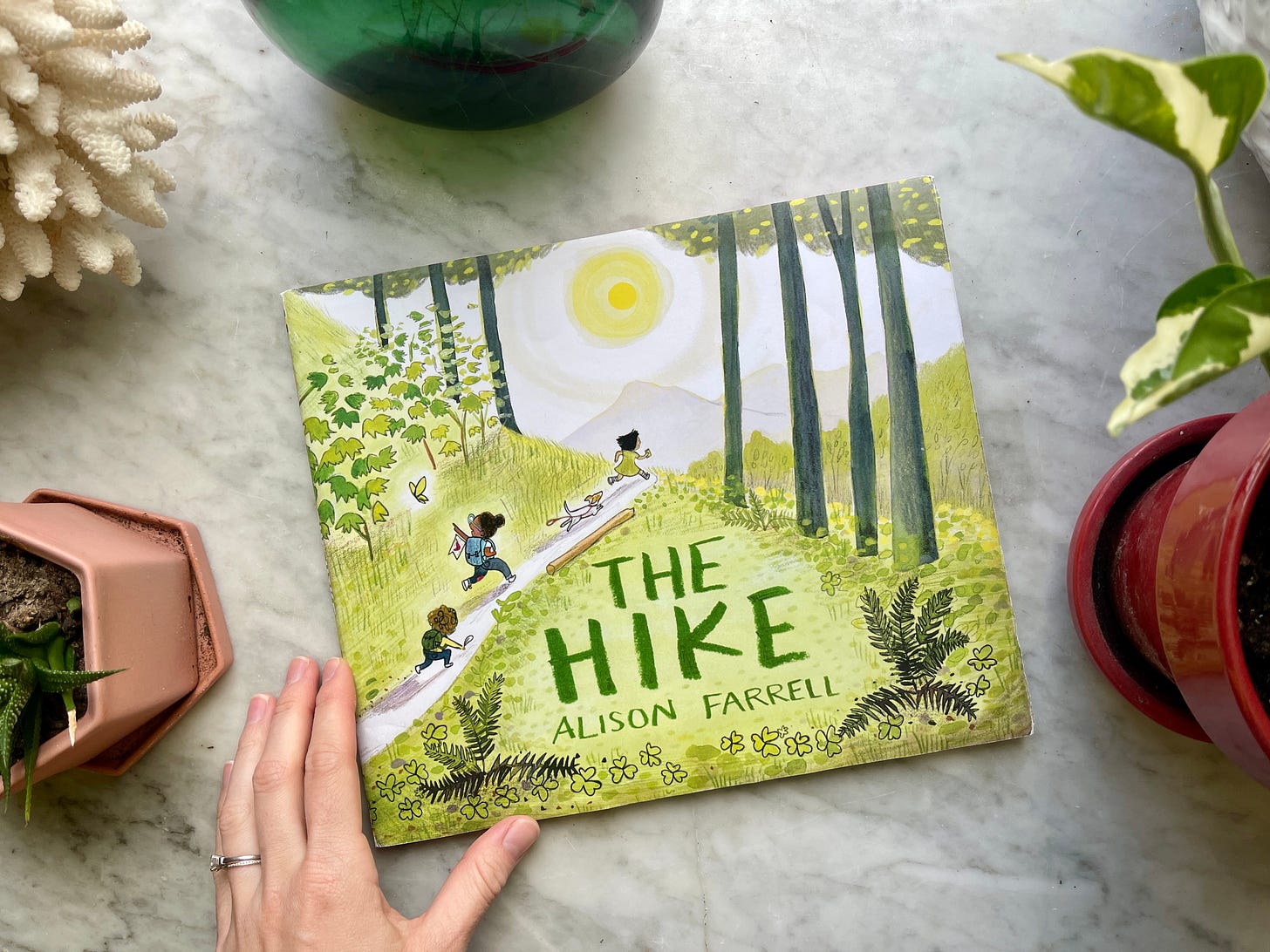

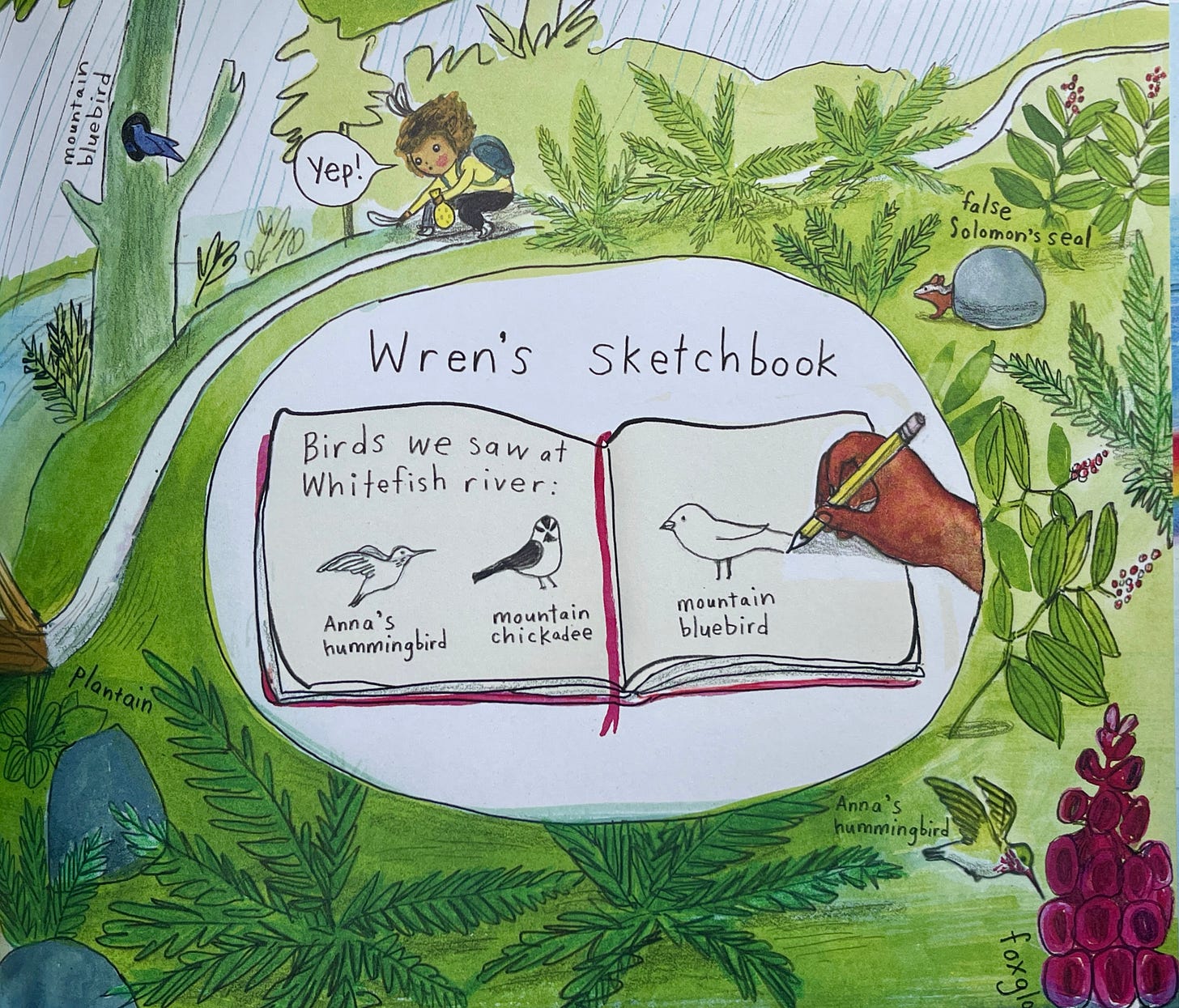



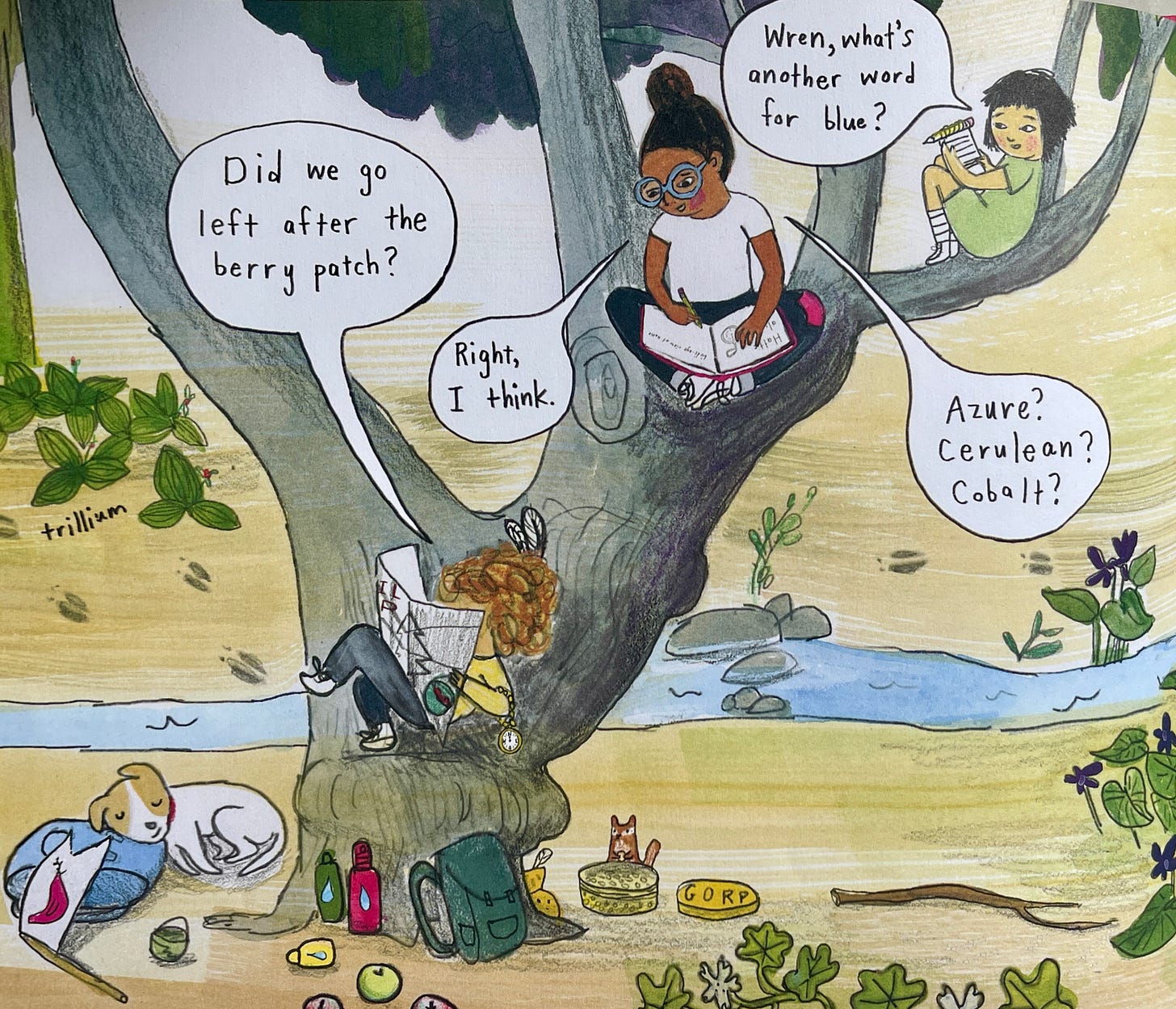
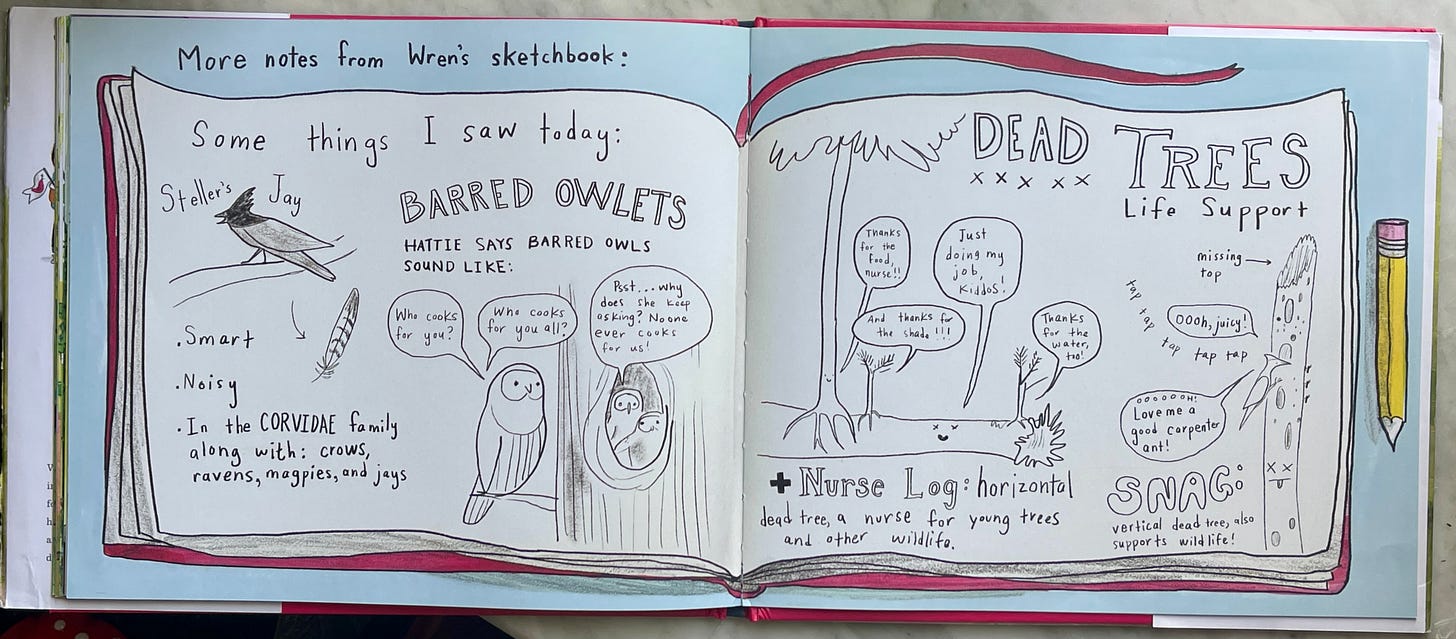


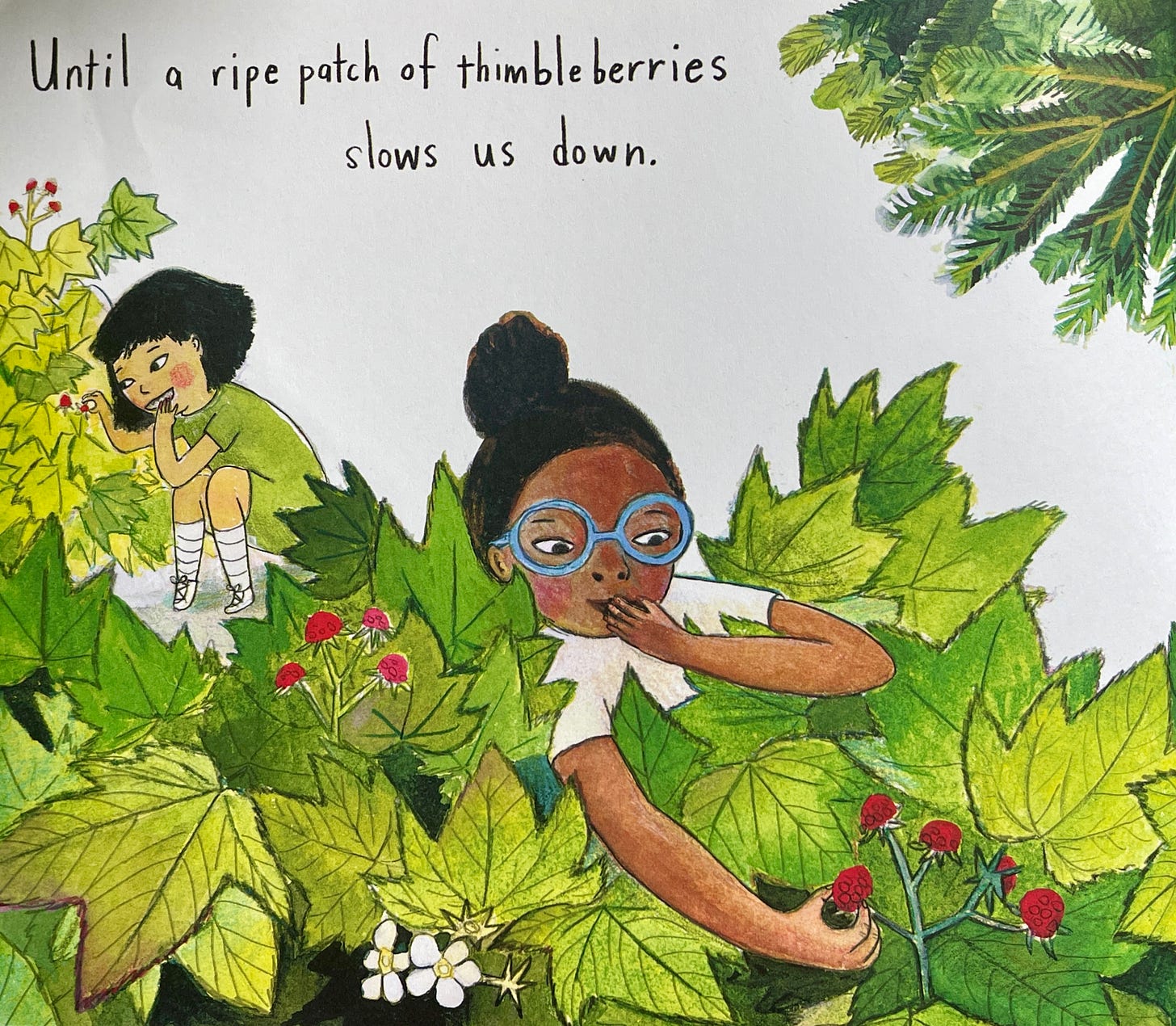
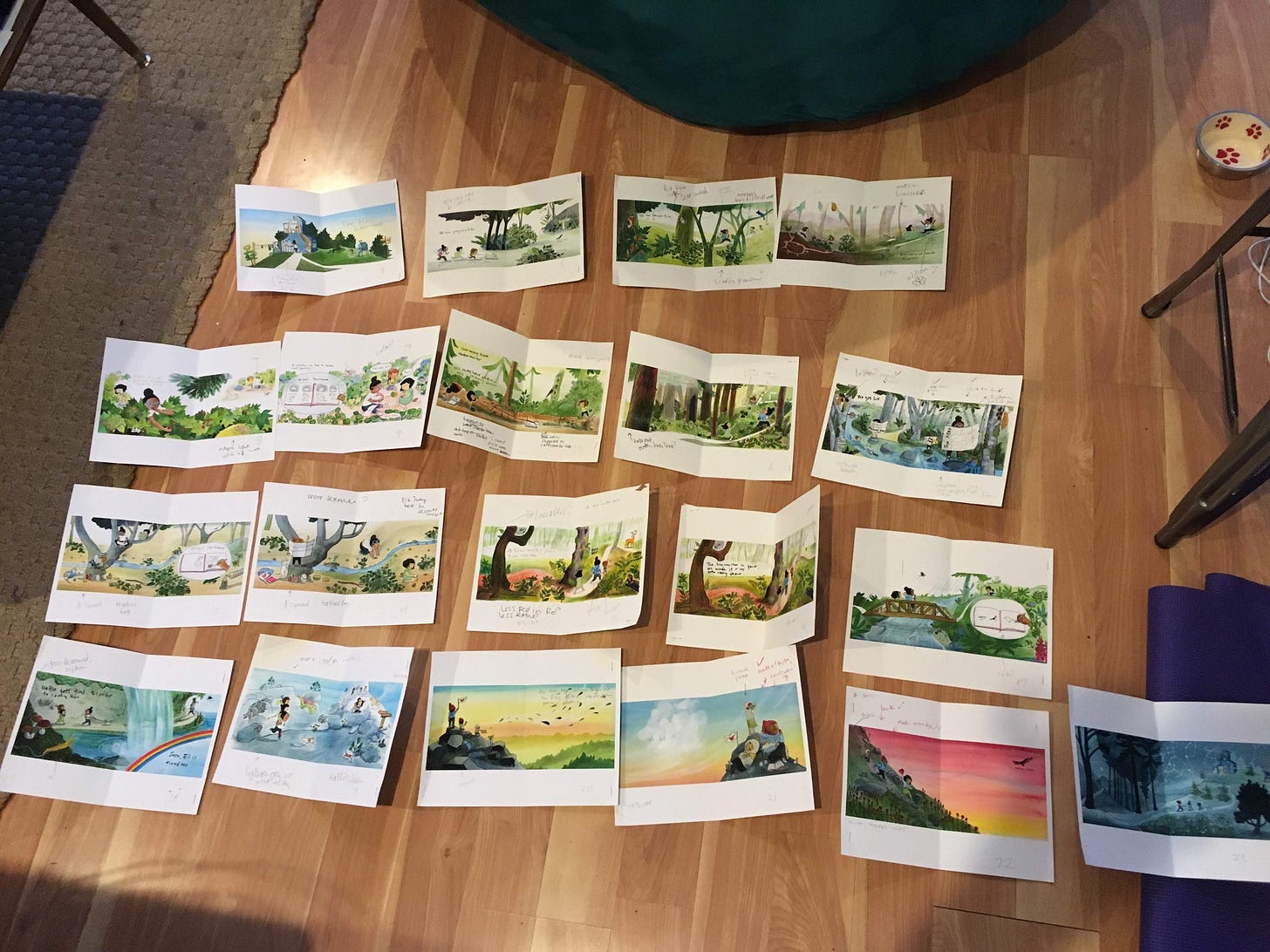

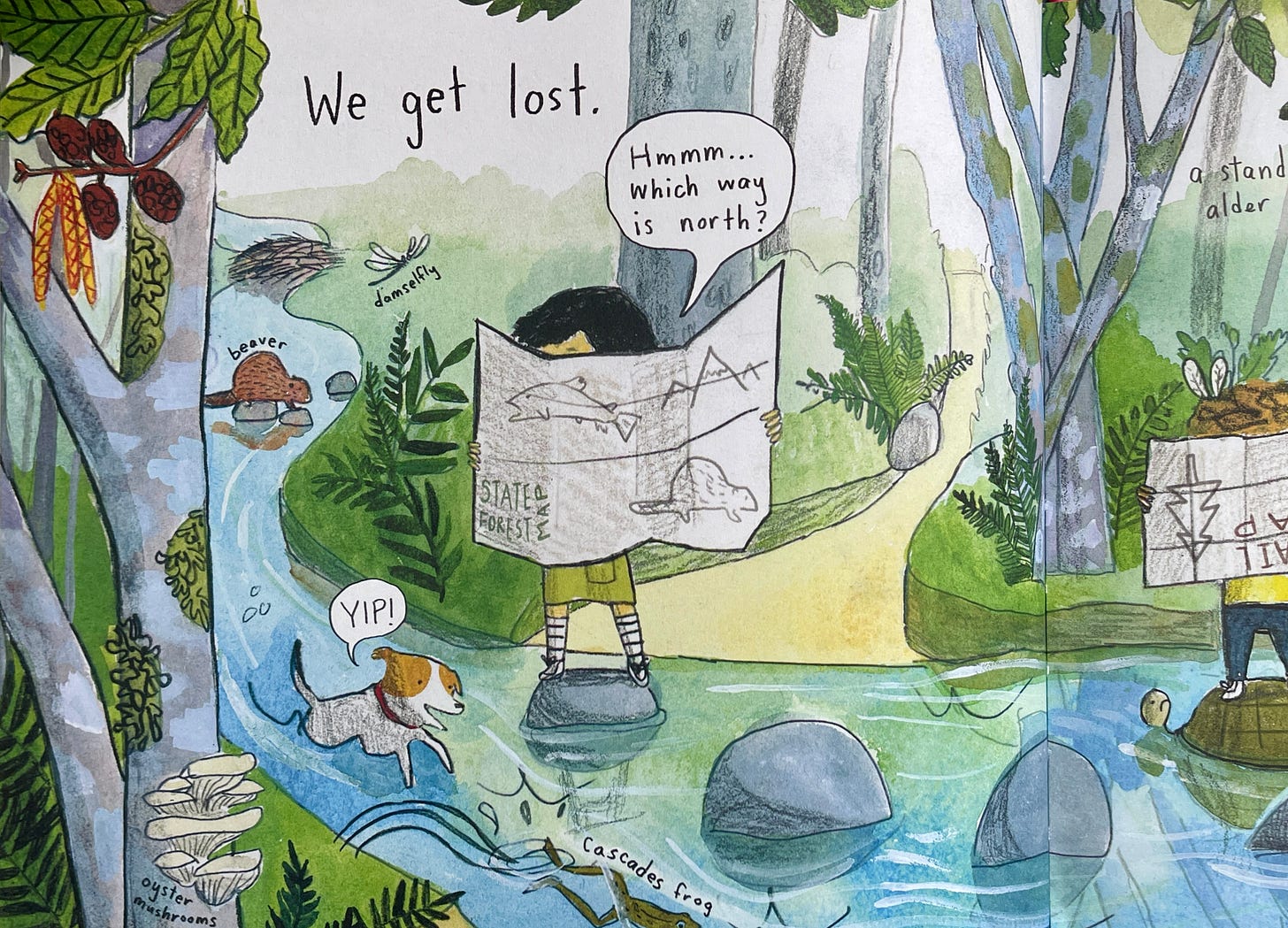
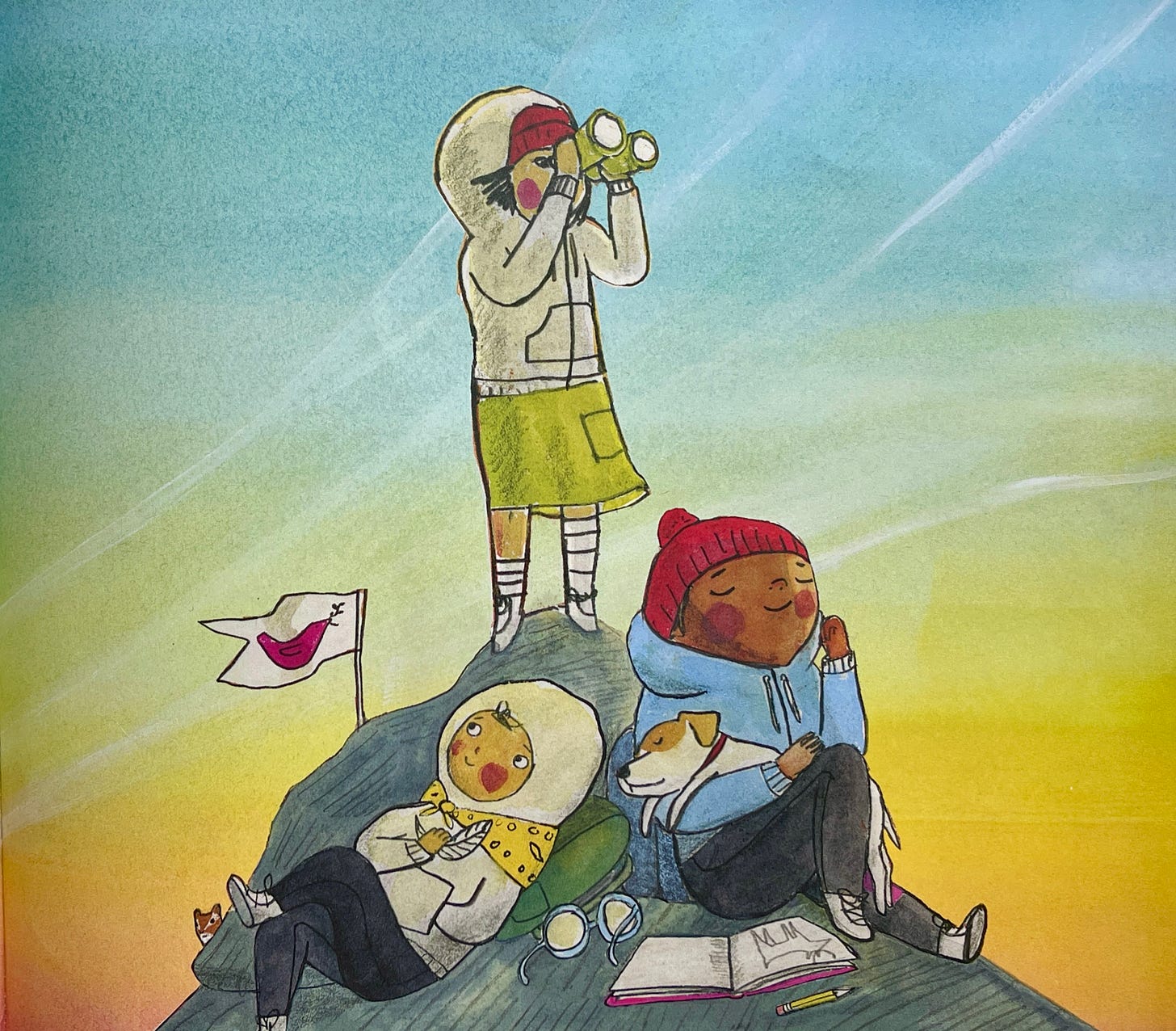
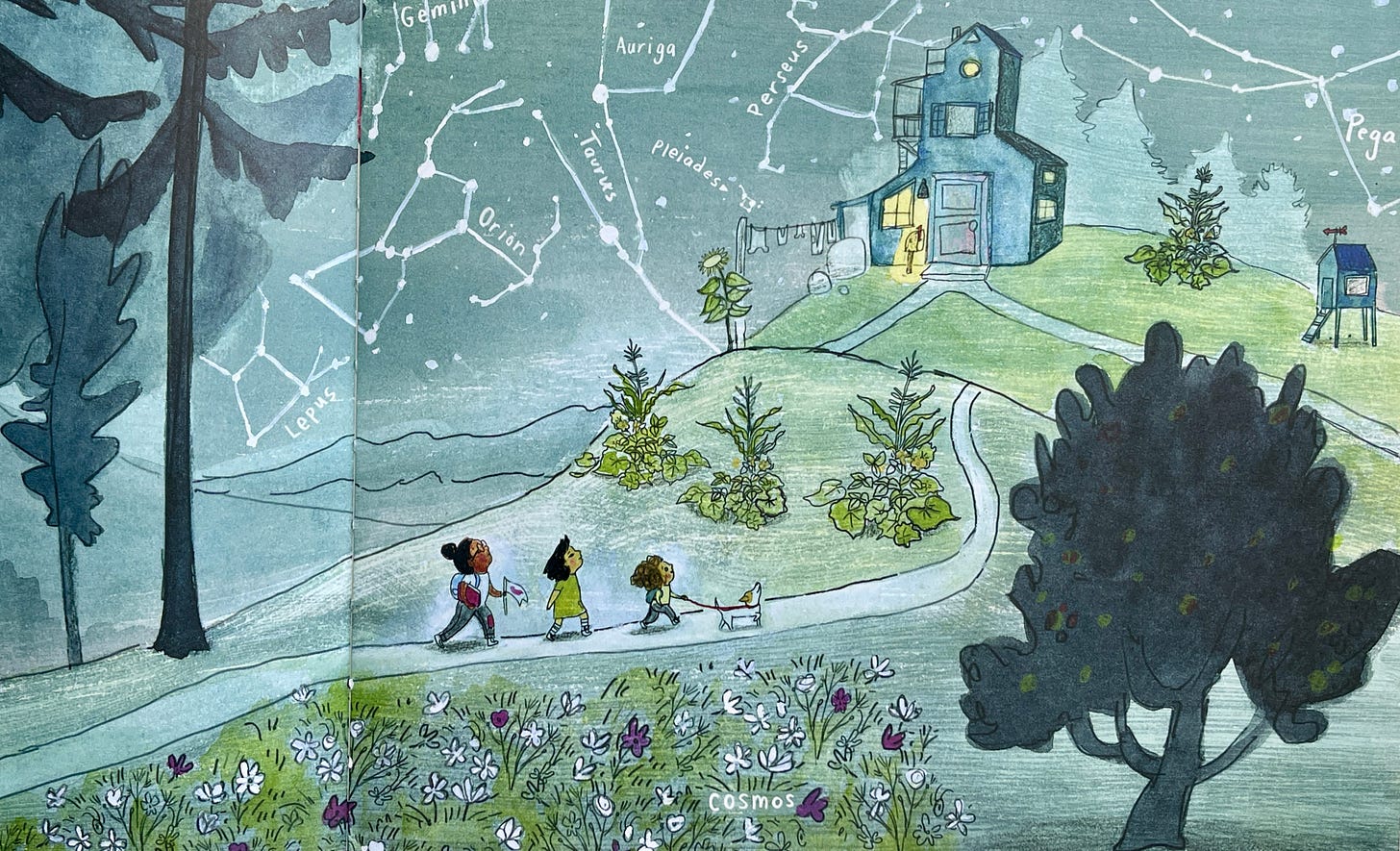

Just ordered from my local bookstore. Thank you!
Thanks for this review! I might use it in my children’s literature course next fall.